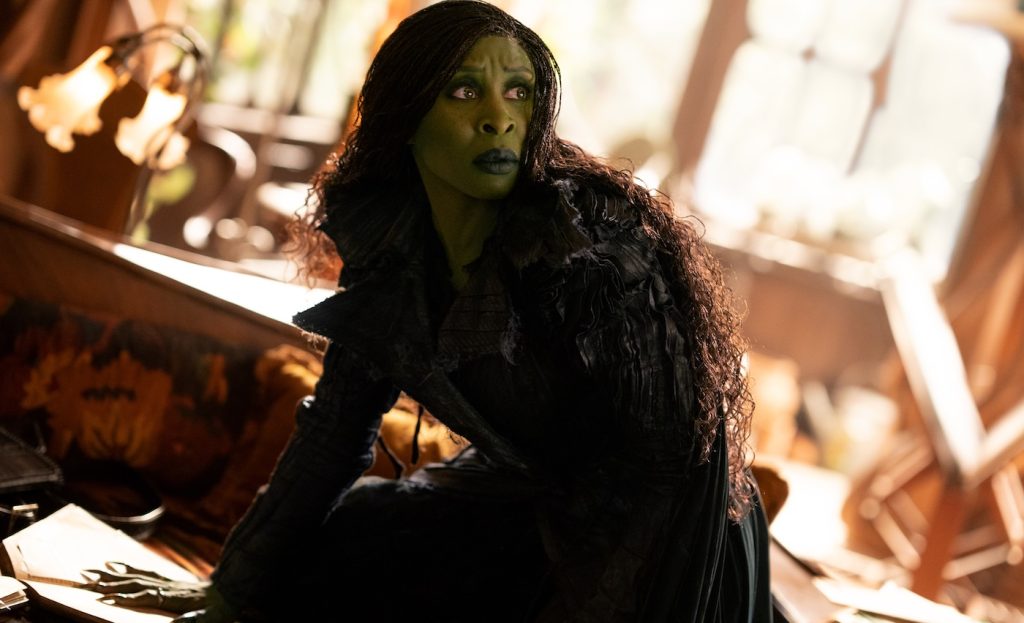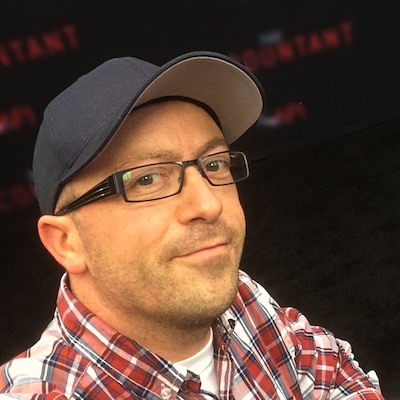“Wicked: For Good” DP Alice Brooks on Harnessing Fire & Shadows to Forge an Unforgettable Finale
A wizard of color and light, cinematographer Alice Brooks knew Wicked: For Good would require a very different tone and texture from what she delivered for audiences in the first film.
The second part of the epic adaptation of the Broadway musical, itself a prequel to The Wizard of Oz and adapted from Gregory Maguire’s novel, focuses on the maelstrom surrounding Cynthia Erivo’s Elphaba, the future Wicked Witch of the West, and her relationship with Ariana Grande’s Glinda, the Good Witch of the North. It also includes Dorothy’s world-changing arrival in Oz. In For Good, Elphaba’s mettle is tested as she embraces her role as the Wicked Witch, a true outcast whose intentions, while pure, are twisted and maligned by the Wizard (Jeff Goldblum), and his superior in intellect and malice, Madame Morrible (Michelle Yeoh), who aim to use Glinda as a glittery mouthpiece for their control over Oz and demonization of Elphaba as the root of all evil.
Whereas Wicked leaned into light and love, Wicked: For Good’s darker feel gave Brooks, a longtime collaborator with director Jon M. Chu, a whole new sandbox to play in, with a shift in everything from texture to tone to highlight the finale’s deeper, darker emotions.
Here, Brooks lays out how the use of real fire, reflections, shadows, mirroring shots, and even an iconic Disneyland ride were key to her visual storytelling.
Wicked: For Good largely takes place at night, whereas Wicked was a daytime adventure. What challenges and opportunities did this create?
The first hour of the first film is all day exterior, and 90 percent takes place during the day. It’s only in the last 40 minutes of the first film that we have one long sunset, Elphaba finds her power, and jumps off the Emerald City tower, flying into the night. That really set the tone for the second movie. When Jon and I break down a script, we talk about one-word emotional intentions for each scene. On Wicked, we talked about discovery, power, friendship, and choice. For this, we talked about sacrifice, surrender, separation, and consequence. It became very clear early on that the first movie would glow in effervescent daylight, and the second would have a weight, maturity, and a density to it. Every single choice we made, whether it was lenses, camera movement, or lighting cues, they were steeped in those emotional intentions.
Can you give an example?
I think of emotional intentions the same way an actor would break down their character. For me, the character is the camera, the lighting, and the movie’s visual style. What is underneath the words on the page? For example, The Girl in the Bubble is a pivotal moment. It’s about Glinda seeing herself for the first time. Is that the person she wants to become? The emotional intention had something to do with reflection. Jon and I started talking about Glinda’s self being reflected back at her. He wanted to move in and out of mirrors and not know if you were inside or outside the mirror. Which side are you looking at? For the three and a half minutes of song, it appears to be a single shot, but it’s actually seven shots: five Steadicam shots and two crane shots, put together as one as we move in and out of four different mirrors.

Wicked: For Good’s nighttime setting changes a lot of the colors and the use of light from the first film. How did that impact what we see?
The second movie has a different texture. Shooting a movie that is mostly at night changes everything. I can control every single thing within our frame. In the first movie, the two women are in almost every single scene together, and in this one, they’re rarely together. Suddenly, we have two very different spaces to play in. For Elphaba and her green skin, I was able to get much closer in this movie. Her introduction is these handheld shots, and we are in the tightest close-ups that we use. You can feel all the texture, but she’s also in the shadows. It is day when we meet her, but she’s inside her nest, hidden and in secret, and her green skin is in shadow. I used every color of the rainbow to light this movie, and each color means something in Oz. Blue is the color of Elphaba and Glinda’s love, and you see it in the OzDust ballroom at first, then we use the same color moonlight in the number “For Good,” in combination with orange light from the torches. We used real flames. We had these beautiful torches and wind, so when the torches are blowing, the light moves on Elphaba and Glinda’s faces, you see the reflection in the purple wardrobe that Glinda has, and orange is the color of Elphaba’s transformation.

We are introduced to Dorothy in Wicked: For Good. She has a totally different palette and aura.
We treat Dorothy and the Witch Hunters with restraint. We never see them close up. They’re always within somebody’s point of view, from afar or from behind. For the melting of the Wicked Witch scene, it’s all from Glinda’s point of view. She can’t quite see because she’s in a closet. Right before the melting, Glinda and Elphaba have their last moment together, and we did it as an in-camera split screen, with Glinda on the right and Elphaba on the left. We tore the set apart to shoot it so they could actually do it at the same time. We filmed them simultaneously with Elphaba in her orange torchlight and Glinda in a soft blue light. The rest of the melting scene takes place from Glinda’s point of view through a crack in the door. We do cut outside and use something called a Petzval lens, which obscures the frame. Just like Glinda, the audience is never given a clear view, so we’re given a lot from the colors instead. For Dorothy, there’s the sky blue of the checks on her dress, and the shoes are crystal, but the crystals reflect the light in the room, so they appear to be different colors in different parts of the movie. You’ve also got the green of the Scarecrow’s wardrobe, which comes from the emerald green. There is a much broader color palette.
The OzDust ballroom scene was an anchor for you in Wicked. When you had that, everything else fell into place. What was your anchor here?
It was “Wonderful” through to the wedding and the secret prison. It’s a bigger amount of screen time than the first one. When the two women connect for the first time and Elphaba is pulled back into the Wizard’s manipulative grasp, they get on a physical ride on a track. Jon wanted it to feel like the Peter Pan ride at Disneyland. We filmed them in ways we had seen them together in the first movie: a hand-grasp scene, them looking directly into the lens at each other, and the same silhouette from behind. We mirror shots in this poetic way so that it pulls on the emotional heartstrings. For the wedding and the secret prison, we see them in very similar shots. Glinda walks down the stairs towards Fiyero at her wedding, and Elphaba walks down the stairs into the secret prison where all the animals are being held. They are both walking towards their destiny, but they don’t realize it is about to change. When Elphaba reaches Dr. Dillamond in the cage and Glinda sees her entire wedding torn apart, the whole movie shifts.
The Wicked movies have been a personal journey for you.
I understand the feelings of others, and that’s what this movie is about. What I didn’t know was going to happen to me through this process that was so powerful is that the young children who come up to me and talk about their feelings about the movie. I was at a screening in London, and this four or five-year-old boy raised his hand. He was very shy, but he was holding his Elphaba doll and said, ‘Thank you for making Elphaba. I’m Elphaba too,’ and he started flying his doll around. I have always been the other in all the choices I’ve made in my life. I never felt like I fit in anywhere. The only times I’ve felt like I fit in are on a movie set. It’s when I feel completely myself. It has been a five-year process since I started Wicked, and having my child with me meant I could be both mother and cinematographer.

You speak so highly of your UK crew. Was there anyone who really stood out that people should be lining up to work with?
Lucie Barbier, our dailies colorist. The dailies color are so important because it’s the color the director is going to watch throughout the whole movie. Company 3 introduced me to lots of colorists who were amazing, but I was looking for someone who had this purity to them, and not wanting just to duplicate what was trendy. Finally, they found Lucie for me. She had just left a different color facility, but they said they’d bring her in on the movie if I liked her. I hope she is a final colorist one day because she is the most remarkable colorist I’ve ever worked with.
Featured image: Cynthia Erivo is Elphaba in WICKED FOR GOOD, directed by Jon M. Chu.



